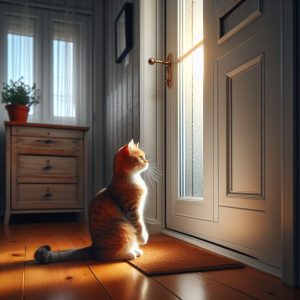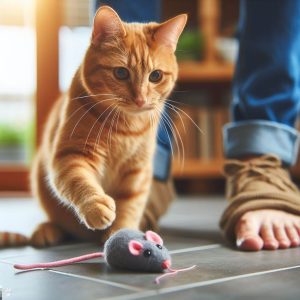Drinking enough water is crucial for your cat’s health. Dehydration can cause serious problems like urinary tract infections, kidney disease, and constipation. Unfortunately, many cat owners struggle to get their feline friends to drink more.
Cats tend to have a low thirst drive and rely on the moisture in their food to stay hydrated. However, feeding only dry food means your cat isn’t getting enough fluids. Even cats who eat wet food may not be drinking optimal amounts.
This comprehensive guide will provide tips and tricks to encourage hydration and get your cat drinking more water. With a few simple strategies, you can help your furry companion stay happy and healthy.
Why Cats Don’t Drink Enough
Before diving into solutions, let’s look at some of the reasons why cats don’t drink adequate amounts:
Low Thirst Drive
Cats evolved as desert dwellers, so they developed a low thirst drive and are very efficient at conserving water. This means they may not feel thirsty until they are already dehydrated. Their natural instincts work against sufficient hydration, so we need to find ways to overcome this.
Preference for Moving Water
In the wild, cats tend to prefer drinking from moving sources like streams and faucets rather than stagnant ponds. This instinct remains, so they are often more enticed by running water. Still bowls may not pique their interest.
Dislike of Water Near Food
Some cats don’t like having their food and water bowls close together. Since they eat prey in nature, the water source would naturally be separate.
Medical Conditions
Certain medical conditions like kidney disease, diabetes, and hyperthyroidism can cause increased thirst and dehydration. So increased drinking may signal an underlying issue.
Stress or Anxiety
Stressful environments, new homes, noisy households, or introducing new pets may cause anxiety and suppressed drinking behaviors. Make sure your cat feels comfortable and relaxed.
Now let’s explore tips to overcome these hurdles and get your kitty drinking more!
Tips to Increase Your Cat’s Water Intake
With a few simple tricks, you can turn your cat into a water lover. Try out these methods to find the best hydration solution for your feline:
1. Give Fresh, Clean Water Daily
This fundamental tip is likely the most important. Cats love fresh, cool water, so you need to change it every day. Wash and refill bowls with cool filtered water to provide the most appealing option.
Dirty or stale water will turn your cat off from drinking. Especially with stagnant bowls, you must swap water at least once per day.
2. Offer Water in Multiple Locations
Don’t limit your cat to one water source. Place bowls around your home so there’s always one nearby. Popular spots are in the kitchen, by the food dish, next to the litter box, by windows or sleeping areas, and anywhere your cat spends time.
Having water easily accessible in high traffic areas reminds your cat to take a few sips throughout the day.
3. Get a Pet Water Fountain
Pet fountains provide a steady stream of filtered, circulating water. The sound and movement mimics natural drinking sources and taps into feline instincts.
The result? Your cat will drink up to 50% more from pet fountains versus standing bowls. Look for BPA-free plastic models with replaceable charcoal filters to continually purify.
4. Add Extra Bowls Near Food Dishes
Since cats often drink immediately after eating, put additional water bowls right next to your cat’s food. Separate food and water spaces, but keep them close together in the same room.
This makes water readily available to complement meals. Even better – choose wet cat food, which has high water content.
5. Experiment with Bowl Type and Size
Cats can be picky about their water bowls. The material, shape, depth, and width can impact drinking. Test different styles to see what entices your cat.
Shallow, wide bowls allow cats to drink without touching their whiskers. Long, narrow bowls accommodate face shapes. Stainless steel and ceramic are more attractive than plastic. See what your cat responds to best!
6. Elevate the Water Bowl
Try raising your cat’s water bowl a few inches off the floor. Elevated bowls are more natural for cats since streams and puddles aren’t on ground level. Avoid placing bowls in high traffic areas or beside walls, as cats prefer to drink with a view of their surroundings.
You can buy cat water bowl stands or simply place the bowl on an upturned small plastic container. Monitor to ensure your cat can reach it comfortably.
7. Flavor the Water
Add a bit of tantalizing flavor or aroma to make water more enticing. A few tasty suggestions:
- Tuna juice or low-sodium chicken broth
- Diluted catnip “tea”
- Unflavored gelatin powder
- Crushed freeze-dried fish treats
- A pinch of cat grass or catnip
Stick to natural flavors and monitor intake to avoid overtreating. Flavoring the water makes it more exciting.
8. Provide Ice Cubes for Play
Some cats love batting around ice cubes and licking the cold, melted water. It’s an interactive way to boost hydration. Use plastic cube trays versus metal to avoid clanging and cracked teeth.
Offer a few cubes in a shallow bowl or directly on the floor for your cat to play with and stimulate drinking. Supervise to prevent choking hazards.
9. Transition to Wet Cat Food
Wet, canned cat food has much higher moisture content – typically 75-85% water versus 5-10% in dry kibble. Feeding wet food provides essential hydration, so gradually switch at least partially to canned/pouched options.
Mix increasing portions of wet food into your cat’s meals over a couple weeks. This smooths the transition to the new texture and taste. Just take care not to drastically reduce calorie intake.
10. Rule Out Underlying Medical Issues
If your cat is drinking significantly more or less than usual, get a thorough veterinary checkup. Excessive thirst can indicate diabetes, hyperthyroidism, kidney disease, or other problems requiring treatment.
Decreased drinking may also signal health issues like dental disease, nausea, or urinary tract disorders. So monitor water intake patterns and consult your vet with concerns.
Setting Up the Purrfect Water Station
Now let’s summarize how to put some of these tips into action and create the ideal water station for your cat:
- Choose a large, wide ceramic fountain as the centerpiece. Top it off daily with cool filtered water. Place it in a main living area.
- Flank the fountain with two stainless steel bowls, one on each side.
- Fill one bowl with plain fresh water.
- In the other bowl, add ** diluted tuna juice** or other flavor.
- Elevate both bowls a few inches for easy access.
- Near your cat’s food, provide another 1-2 bowls filled with cool clean water.
- Scatter a few ice cubes on the floor as needed for hydrating playtime.
- Frequently wash and refill all water vessels to keep the water clean and appealing. Dumping and refreshing water daily is key!
This water station provides streaming filtered water plus flavored and plain still options in clean bowls. Easy access, aroma, movement, and variety gives your cat everything they need to stay well-hydrated.
FAQs About Improving Cat Hydration
Here are answers to some frequently asked questions about encouraging cats to drink more water:
How much water should a cat drink per day?
The average 10 lb adult cat needs about 3/4 cup to 1 cup of water daily. Intake varies based on weight, diet, and health status. Cats eating only dry food require more water than those eating canned food. Monitor your cat’s hydration status versus aiming for a specific amount.
How can you tell if a cat is dehydrated?
Signs of dehydration include lethargy, loss of appetite, dry gums, sunken eyes, and skin that lacks elasticity. Dehydration is serious, so consult a vet if these symptoms develop. Monitoring litter box habits can also clue you in, as dehydrated cats will produce small, concentrated urine clumps.
Should you give cats distilled water?
Regular drinking water is perfectly fine for cats unless you have poor water quality from the tap. But if you prefer distilled water, it won’t harm your cat. Just ensure proper mineral intake from their overall diet. Cats also enjoy the taste of cool filtered water.
Do cats like hot or cold water?
Cats prefer their drinking water to be cool, not cold or icy. Hot water can be dangerous, while cold from the fridge may put off some cats. Cool filtered tap water or fountain water from 60-70°F is optimal for feline palates.
Can cats drink lemon water?
Avoid giving cats lemon water, due to the citric acid and pH level. Small amounts very occasionally won’t harm cats, but it should not be a regular part of their diet. Stick to plain, clean drinking water instead.
Conclusion
Helping your cat stay hydrated with plenty of fresh drinking water is one of the best gifts you can give their health. It prevents serious problems like urinary and kidney issues down the road. Luckily with the right equipment, technique, and encouragement, you can get even finicky felines lapping up water.
Give your cat access to clean, cool drinking water in multiple spots at all times. Invest in a pet fountain. Experiment with fun add-ins for flavor. Elevate and flavor bowls. Offer ice cubes for playtime. Transition to wet food. Most importantly, stay consistent – cats thrive on routine.
With the tips in this guide, you can create a cat-friendly water station and get your kitty drinking more in no time. Stay alert to signs of dehydration and check with your vet if issues arise. But otherwise, get ready to watch your cat start streaming towards better hydration and wellbeing through increased water intake.



